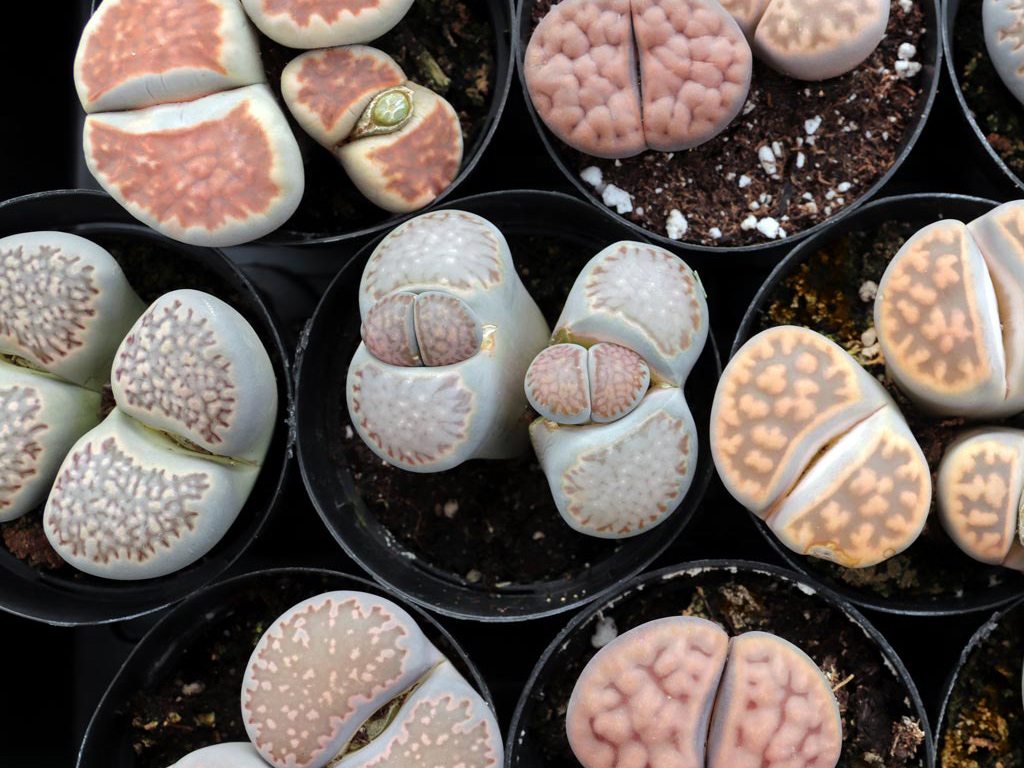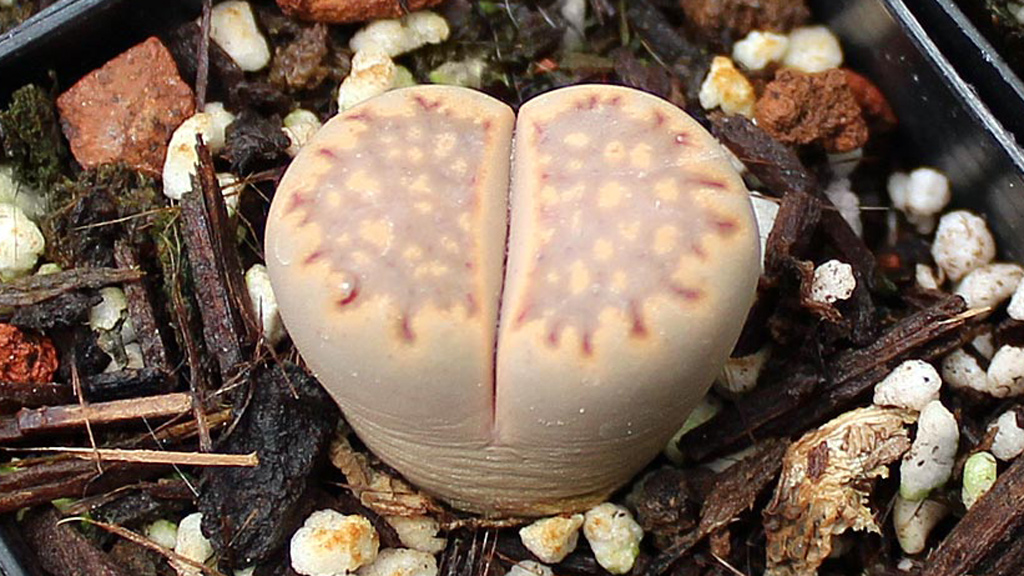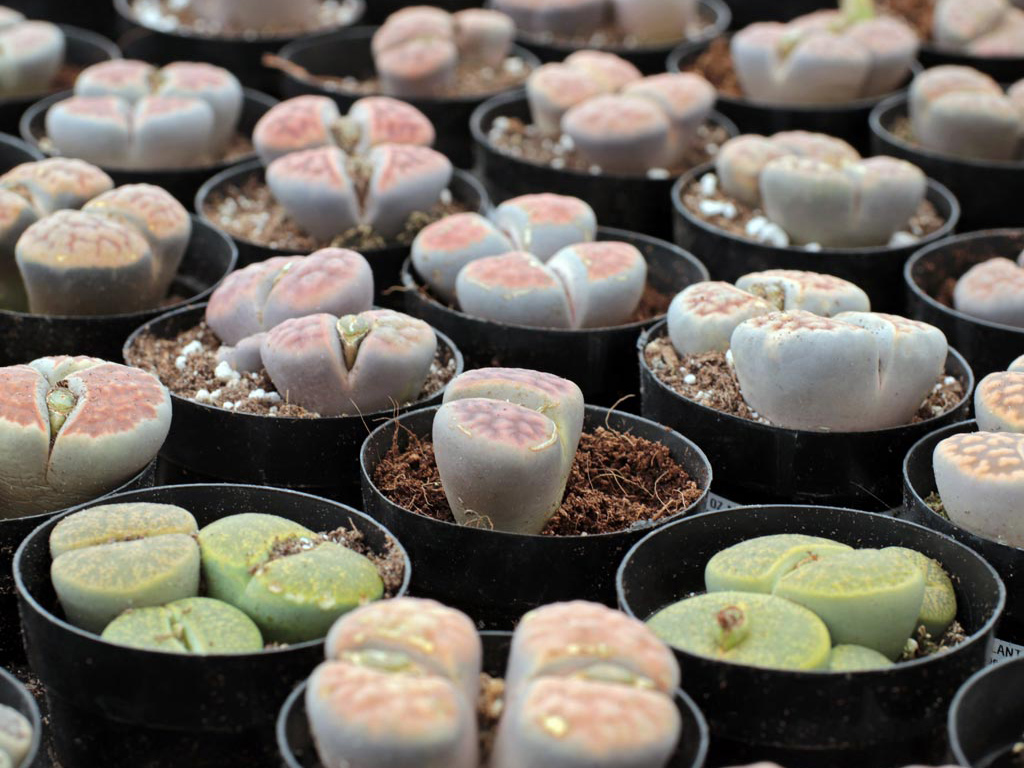Care Guides
Lithops - Where to Buy & How to Grow
What Are Lithops?
Lithops are small, unusual succulents from South Africa with a distinctly rock-like appearance. Their unique look has earned them the nickname "Living Stones" and made them a favorite among succulent enthusiasts.
Lithop or Lithops?
The term "Lithops" can describe both the whole genus and each individual plant. So even a single living stone is still referred to as a Lithops.
Appearance
This miniature plant is near stemless. What you see growing above ground is a pair of leaves with flattened tops.
The leaves come in a wide range of colors and patterns depending on their native habitat. Each species blends in with the specific geology of its native environment. This regionalized camouflage results in diverse appearances throughout the Lithops genus.
Most varieties bloom in the fall by sending up a large flower from the fissure between their leaves. These large, shiny flowers have lots of narrow petals. Lithops flowers can be yellow or white (and very occasionally pink).
How Lithops Grow
After blooming, Lithops go through the process of "splitting". The two leaves will start spreading apart and the seam between them opens to reveal a new pair of inner leaves. Sometimes a plant will have "twins", or two pairs of inner leaves.
The outer leaves will go soft then dry as they release water to nourish the new, inner leaves. Eventually the outer leaves will be so dry that the new leaves can shed their papery husk. The new leaves start absorbing their own water and soon grow larger.
Lithops should only have a maximum of two leaf pairs at any given time (barring the "twins" situation described above). 3+ layers of leaf generations indicates that a plant has been over-watered. To fix this, suspend watering until all the outer layers dry and slough off, leaving a single, healthy leaf pair.
Where to Find Lithops
Lithops are extremely difficult to propagate. Because they are so slow-growing, they are most often grown from seeds instead of offsets. Unfortunately, Lithops seed can take up to a year to germinate and requires carefully controlled conditions. This makes them somewhat rare and difficult to find in nurseries.
At Mountain Crest Gardens, we try to keep Lithops available year-round. We sell a mixture of species, all with fun colors and patterns. If Lithops are not currently available, just click the button that says "Notify Me When Product is Back in Stock".
Lithops Care
Lithops is NOT the easiest succulents to grow. Even experienced succulent growers can be frustrated by these finicky growers.
The most challenging aspect tends to be their seasonal watering needs. Water too much or in the wrong season and you'll soon have an exploded Lithops on your hands.
Here's everything you need to know to keep your Living Stones happy.
Pots & Soil
The key to great succulents is drainage. This is especially important for Lithops. They are adapted to rocky, quartz soil and will not tolerate standing water. They also grow long taproots, so you'll want to pick a deep pot with a drainage hole.
Plant in a light, gritty soil with a high mineral content. We recommend about 20% organic content (e.g. cactus potting soil) and 80% mineral material (e.g. coarse sand, pumice, or perlite). Full Guide to Succulent Soil
Light
Lots of direct sunshine will support healthy Lithops growth. Direct sun in a bright window sill is often sufficient. Grow lights are also a great way to supplement natural light and ensure your plant does not fade or stretch.
Water
Lithops are native to arid environments in South Africa. Most species are accustomed to rainfall in the spring and fall and extended droughts in the summer and winter. Use the following seasonal schedule to grow healthy, beautiful Lithops.
- Water lightly in the fall and spring growing seasons; allow soil to fully dry out between waterings
- Do not water in winter or when a Lithops is splitting
- Begin spring watering only when the older, outer leaves have shriveled into paper-thin husks
- Water very sparingly in summer ONLY if you notice severe wrinkling on the top. Side wrinkles are normal and not an indicator that they need water
Get the conditions right and Lithops are a marvelous living curiosity that thrives on neglect. They're a treat to observe throughout the year and an impressive specimen to complete any collection.






